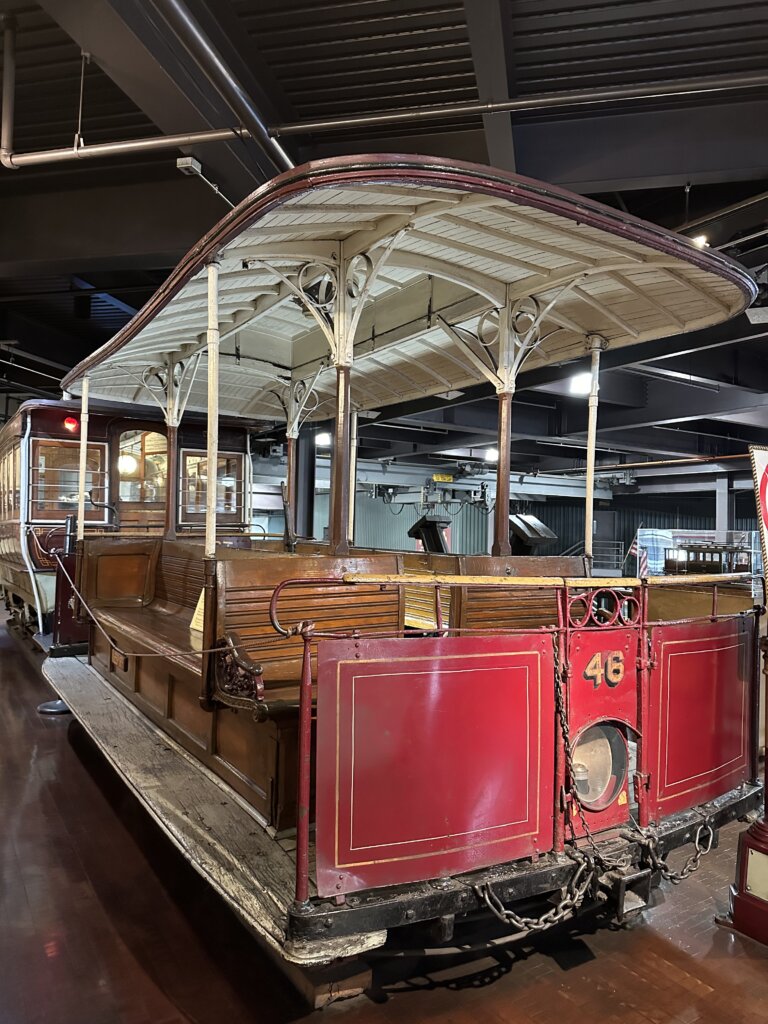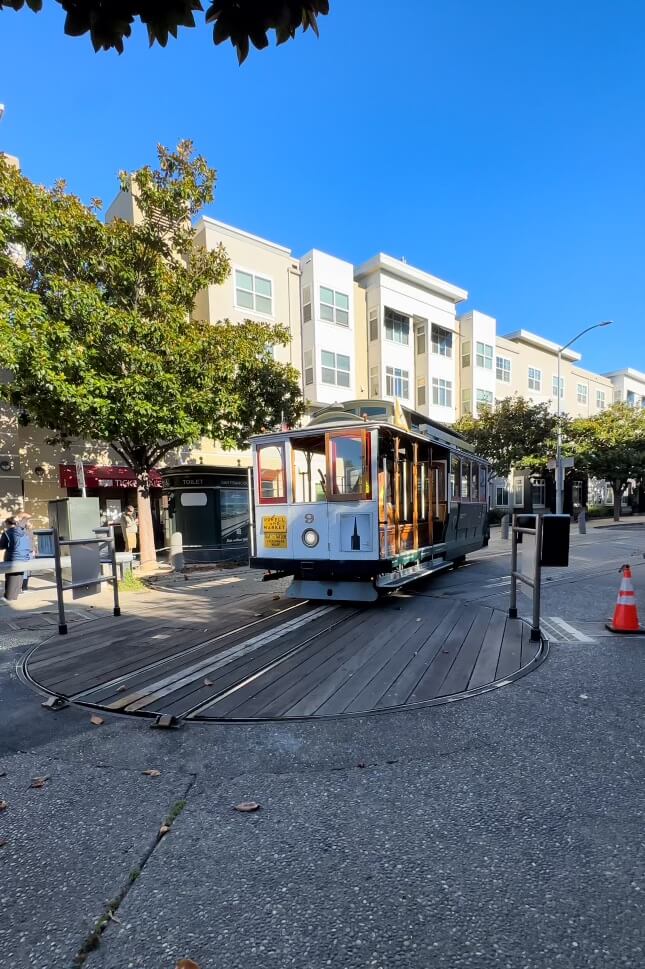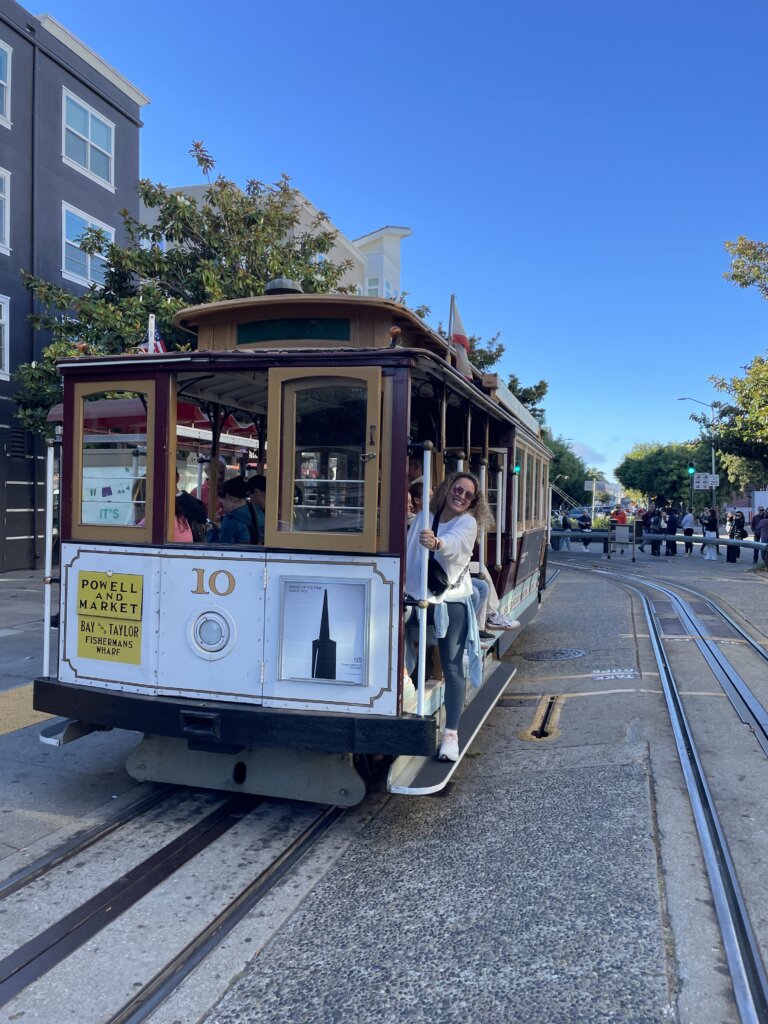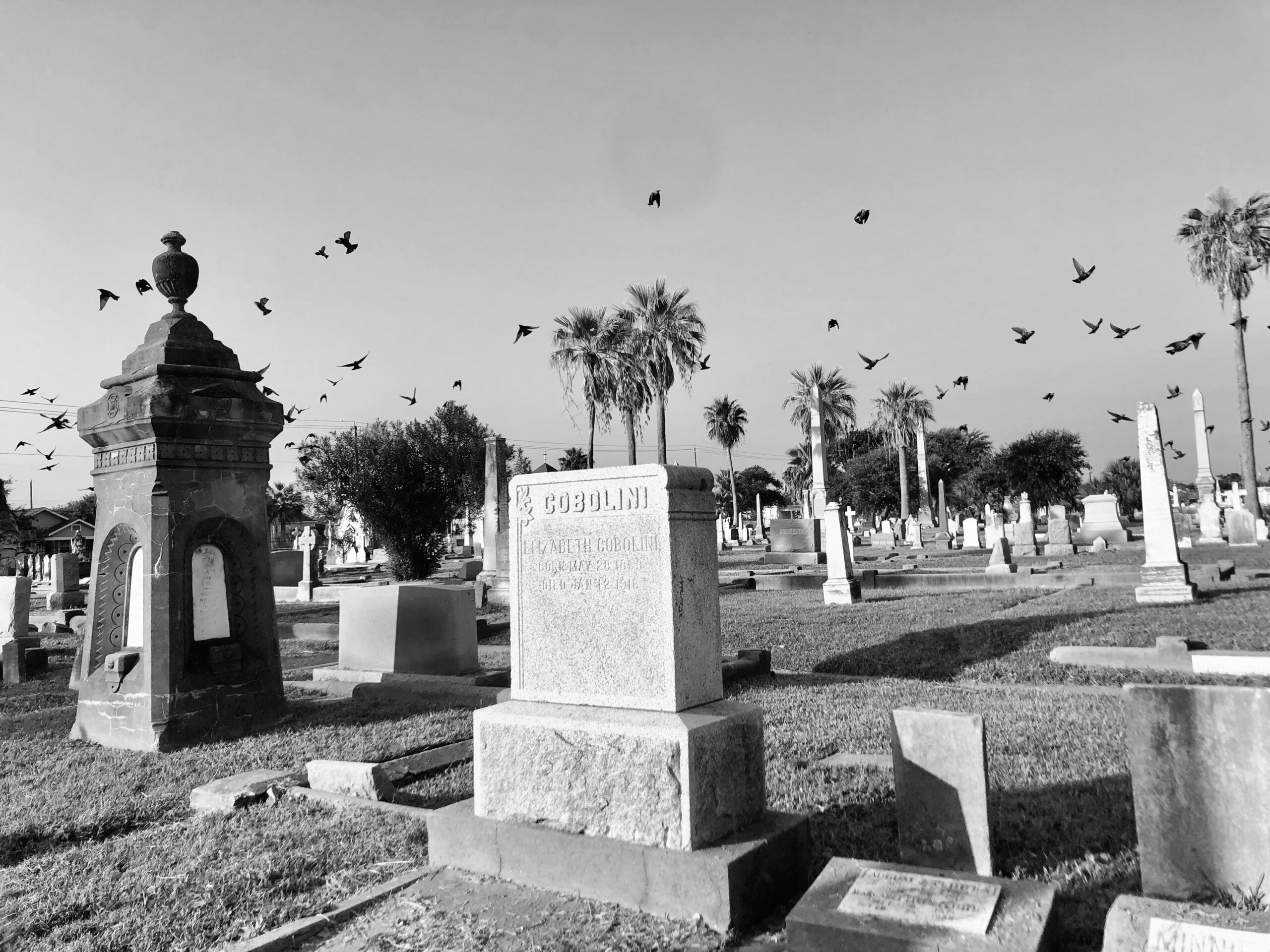San Francisco, a city known for its steep hills and picturesque views, is home to one of the most iconic modes of transportation in the world: the San Francisco cable cars. Not only does it provide a fun and unique way to navigate the city’s hilly terrain, but it also offers a glimpse into the rich history and culture of San Francisco. In this post, we’ll delve into the fascinating history of the cable cars, share fun facts, highlight tourist attractions along the routes, and provide tips on how to make the most of your cable car experience.
Table of Contents
A Brief History of San Francisco’s Cable Cars

The San Francisco cable car system was invented in 1873 by Andrew Hallidie, who was inspired by the challenges residents faced while traversing the city’s steep hills. The first line, known as the Clay Street Hill Railroad, became an instant success, leading to the establishment of additional lines across the city. By the late 1890s, there were over 20 cable car lines operating in San Francisco, transporting residents and visitors alike.
However, the rise of streetcars and automobiles in the 20th century led to a decline in the popularity of cable cars. By the 1950s, the city faced the prospect of shutting down the remaining lines. Thankfully, the community rallied to preserve this iconic form of transportation. In 1964, the San Francisco cable cars were designated a National Historic Landmark, ensuring their survival for future generations.
Fun Facts About San Francisco Cable Cars
- Unique System: The cable car system is the only manually operated cable car system in the world. Unlike modern cable cars, which are typically automated, San Francisco’s cars require an operator to control the brakes and direction.
- Heavyweights: Each cable car weighs about 12,000 pounds, yet they glide smoothly along their tracks thanks to a hidden cable system beneath the streets.
- Ride the Turntable: The cable cars have a unique turning mechanism called a “turntable.” At the end of each line, the cars are manually turned around to begin their journey back, adding to the charm and experience.

- A Ride for Everyone: The iconic “clanging” bells of the cable cars are not just for show; they serve as a warning to pedestrians and other vehicles to clear the track.
- Popular Culture: The cable cars have made appearances in numerous movies, TV shows, and music, including the famous song “I Left My Heart in San Francisco.”
Routes and Tourist Attractions Along the San Francisco Cable Car Lines
San Francisco’s cable car system operates three primary lines: the Powell-Hyde Line, the Powell-Mason Line, and the California Street Line. Each route offers unique attractions and scenic views.
1. Powell-Hyde Line
- Route Description: This line runs from Powell Street to Hyde Street, offering breathtaking views of the Bay, Alcatraz Island, and the Golden Gate Bridge.
- Key Stops:
- Fisherman’s Wharf: A bustling waterfront area with shops, restaurants, and attractions like Pier 39 and sea lions lounging on the docks.
- Ghirardelli Square: A historic chocolate factory turned shopping center featuring artisanal shops and eateries.
- Aquarium of the Bay: An interactive aquarium showcasing marine life from the San Francisco Bay.
2. Powell-Mason Line
- Route Description: This line also begins at Powell Street but terminates at Mason Street. It parallels the Powell-Hyde Line, offering similar attractions.
- Key Stops:
- Union Square: San Francisco’s premier shopping district, filled with high-end stores, galleries, and theaters.
- Chinatown: The largest Chinatown outside Asia, featuring shops, restaurants, and cultural landmarks such as the Dragon Gate.
- North Beach: Known for its Italian heritage, this area is home to numerous cafes, restaurants, and the iconic Coit Tower.
3. California Street Line
- Route Description: This line runs from the Financial District up California Street to Van Ness Avenue. It’s less touristy but provides access to some fantastic attractions.
- Key Stops:
- The Embarcadero: A picturesque waterfront area perfect for strolling, dining, and enjoying views of the Bay Bridge.
- Nob Hill: An upscale neighborhood featuring historic hotels, churches, and the beautiful Grace Cathedral.
- Chinatown: The California Street line also gives access to Chinatown, allowing for a different experience than the Powell-Mason Line.
For a great resource in how to visit San Francisco on a budget you can visit this post.
How to Make the Most of Your San Francisco Cable Car Experience
Best Times to Ride
To avoid the crowds, consider riding the cable cars early in the morning or later in the evening. Weekdays tend to be less crowded than weekends, but if you’re visiting during peak tourist season, expect some wait times regardless.
Seating Tips
For the best views, try to secure a spot on the outside benches. Riding on the side of the car allows you to take in the scenery and capture stunning photos. Additionally, be prepared to stand if the car is full, as seating can be limited.

Plan Your Route
Before hopping on a cable car, check the route map and plan your stops. This will ensure you don’t miss any attractions you want to see. You can find maps at cable car terminals or on the official San Francisco cable car website.
Ticket Information
Purchasing tickets for the cable cars is straightforward. Here are your options:
- Single Ride: A one-way ticket costs $8. You can purchase tickets at any cable car terminal or through the MuniMobile app. The app is a great resource to plan your route.
- Multi-Ride Pass: If you plan to ride the cable cars multiple times, consider getting a Muni Passport, which provides unlimited rides on Muni buses, streetcars, and cable cars for 1, 3, or 7 consecutive days. The 1 day visitor passport is $13.
- Where to Buy: Tickets can be bought at cable car turnarounds, select Muni stations, or online through the SFMTA website.
Getting In and Out of San Francisco Cable Cars
Cable Car Terminals
Each line has designated terminals where you can board and disembark:
- Powell-Hyde Line: Powell and Market Streets (start) and at Hyde and Beach Streets (end).
- Powell-Mason Line: Powell and Market Streets (start) and at Mason and Beach Streets (end).
- California Street Line: California and Market Streets (start) and at Van Ness Avenue (end).
Accessibility
The cable cars are not fully accessible for those with mobility challenges. However, Muni provides accessible alternatives, including buses and light rail, to ensure everyone can explore the city.
Conclusion
Riding the San Francisco’s cable cars is more than just a mode of transportation; it’s an experience steeped in history and a rite of passage for any visitor to the city. With stunning views, unique charm, and easy access to some of San Francisco’s top attractions, the cable car system is a must-try during your visit. Whether you’re seeking adventure or simply looking to soak in the city’s beauty, make sure to add a ride on the iconic cable cars to your itinerary.



